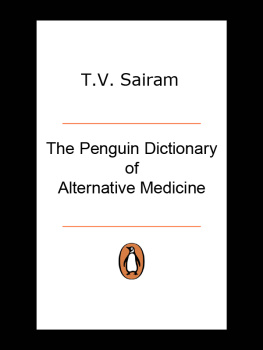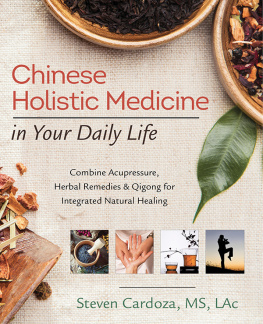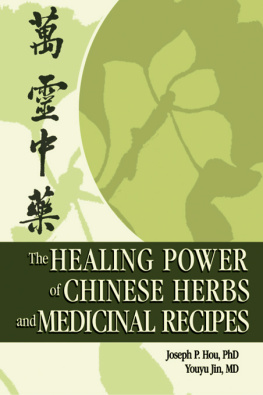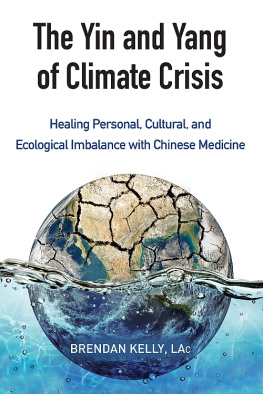Candra M. Linfoot - Moxibustion Traditional Chinese Medicine Healing Art of Yin Yang Therapy
Here you can read online Candra M. Linfoot - Moxibustion Traditional Chinese Medicine Healing Art of Yin Yang Therapy full text of the book (entire story) in english for free. Download pdf and epub, get meaning, cover and reviews about this ebook. year: 2015, genre: Romance novel. Description of the work, (preface) as well as reviews are available. Best literature library LitArk.com created for fans of good reading and offers a wide selection of genres:
Romance novel
Science fiction
Adventure
Detective
Science
History
Home and family
Prose
Art
Politics
Computer
Non-fiction
Religion
Business
Children
Humor
Choose a favorite category and find really read worthwhile books. Enjoy immersion in the world of imagination, feel the emotions of the characters or learn something new for yourself, make an fascinating discovery.

- Book:Moxibustion Traditional Chinese Medicine Healing Art of Yin Yang Therapy
- Author:
- Genre:
- Year:2015
- Rating:5 / 5
- Favourites:Add to favourites
- Your mark:
- 100
- 1
- 2
- 3
- 4
- 5
Moxibustion Traditional Chinese Medicine Healing Art of Yin Yang Therapy: summary, description and annotation
We offer to read an annotation, description, summary or preface (depends on what the author of the book "Moxibustion Traditional Chinese Medicine Healing Art of Yin Yang Therapy" wrote himself). If you haven't found the necessary information about the book — write in the comments, we will try to find it.
Moxibustion Traditional Chinese Medicine Healing Art of Yin Yang Therapy — read online for free the complete book (whole text) full work
Below is the text of the book, divided by pages. System saving the place of the last page read, allows you to conveniently read the book "Moxibustion Traditional Chinese Medicine Healing Art of Yin Yang Therapy" online for free, without having to search again every time where you left off. Put a bookmark, and you can go to the page where you finished reading at any time.
Font size:
Interval:
Bookmark:
Customary Chinese Medicine offers the specialty of needle therapy and moxibustion, which began in the New Stone Age with stone needles and blades as its forerunner. In the Bronze Age (sixteenth to eleventh century BC), our predecessors connected metal needles for treating illness. Through the control of needle therapy and moxibustion, information about vessels or channels steadily created and got to be finished. Needle therapy and moxibustion, by conforming the yin-yang rule of the body itself by method for a manoeuver, could cure numerous sorts of malady, going from microbial contamination to sicknesses of the sensory system and useful illnesses, and are particularly powerful for assuaging agony. Owing to its ability to soothe torment, old medicinal specialists connected needle therapy to suppress torment before minor operations. Furthermore this in the long run brought about the development of needle therapy absence of pain (needle therapy anesthesia).
The specialty of needle therapy and moxibustion was spread abroad in the early period. In the East, Japan and Korea were the two nations that first came into contact with the Chinese craft of needle therapy and moxibustion. Ahead of schedule in 562 AD, a Chinese researcher, Zhi Cong, took Illustrated Channel and Point Chart to Japan. From there on, the Japanese powers stipulated that the Classic of Acupuncture and Moxibustion, the most punctual work of its kind now surviving, be an obliged course for restorative study. In 1673, W. Rhijne, a doctor of the East Dutch India Company, presented needle therapy/moxibustion into France. Then, E. Kampfer, a German doctor, brought it into Germany.
The study of acupuncture/moxibustion thrived in Europe from there on and made its commitment to the strength of the individuals in all European nations. Chinese pharmacology is an alternate vital commitment made by the Chinese individuals to the world's therapeutic munititions stockpile. The Shen Nong's Classics of Materia Medical, the soonest pharmacological work now existent, was composed in around the second century AD. It recorded 365 sorts of material medica. In spite of the fact that its order of medications is somewhat primitive and blunderous, it contains numerous exceptionally powerful cures, among them herbal ephedra for asthmatic hacks, radix dichromate as an against -malarial medication, rhizome cupids for diarrhea, radix et rhizome rhea as a cathartic operators and sargassum as a hostile to goiter medication are the renowned ones, which have been ended up being viable. Maybe the most unmistakable and powerful work in this field is the Compendium of Materia Medica, written in 1593 by Li Shizhen, which grasps 1892 sorts to home grown medications separated into 16 classifications: water, discharge, earth, metal and stone, grass, oat, vegetable, natural product, wood, utensil, worm, scale, shell, fledgling, brute and man. The characterization connected by this work gives off an impression of being genuinely cutting-edge when contrasted and contemporary works in the same field. This naturalist work grasps accomplishments in science, science and other common sciences, notwithstanding its arrangement. Case in point, Shizhen said the phenomena of hereditary qualities, correlative variety and the adjustment of creatures to their surroundings. He additionally said the extraction of mercury from herba portulacae and Gallic corrosive from galla chinensis. For the arrangement of specific medications, he embraced different courses in which refining, vanishing, sublimation, precipitation, smoldering and flowering were connected. No big surprise this work has drawn the consideration of numerous researchers in outside nations with regularly expanding energy. Locally, this voluminous work has been republished and reproduced in the range of thirty releases as such, and it has been interpreted, halfway or totally, into outside dialects including German, French, English, Latin, and Russian for Europe and Japanese and Korean in the East, the recent two seeming much sooner than the previous. The most conspicuous evolutionist, Charles Darwin, referred to some material, either straightforwardly or by implication, from Li Shizhen's work. It is truly common that Li Shizhen turned into a standout amongst the most noticeable and remarkable researchers in the historical backdrop of antiquated characteristic science on the planet.
Heat treatment utilizing the herb anthems vulgaris (moxibustion, "moxa") or a routine warmth light may be put on or close to any piece of my body. For roundabout moxibustion medications the moxa is put on the leader of the needle or hindrance, (for example, a cut of ginger or salt), which rests on the skin. At the point when direct moxa is utilized, the moxa is put specifically on the skin. The warmth created from moxa medications may include slight uneasiness or leave a little rankle.
This is a precisely pleasant way, which has extraordinary contrasts from others. Be that as it may regardless it has impediments on time. It needs such quite a while on treating little wounds. However the vast majority of the individuals don't have confidence in doing it. They think it's not characterized in expert. Some of the individuals never knew about it. So I think it require a superior spread and demonstrate a fruitful case to individuals. That it is decent at wellbeing.
During Insertion of different styles and sizes of needle therapy needles into body at different profundities and areas. You have to be mindful that certain symptoms that may happen taking after a needle therapy treatment are:
-Drowsiness happens after treatment in a little number of patients, and, if influenced, you are exhorted not to drive;
-Minor draining or wounding happens after needle therapy in around 3% of medicines;
-Pain amid treatment happens in around 1% of medicines;
-Symptoms can deteriorate after treatment (under 3% of patients). You ought to educate your acupuncturist concerning this, however it is generally a decent sign;
-Fainting can happen in specific patients, especially at the first treatment.
Furthermore, if there are specific dangers that apply for your situation, your professional will examine these with you.
Aside from the standard therapeutic subtle elements, it is critical to tell your specialist:
-If you have ever encountered a fit, weak or clever turn;
-If you have a pacemaker or whatever other electrical insert;
-If you have a draining issue;
-If you are taking hostile to coagulants or some other pharmaceutical;
-If you have harmed heart valves or have whatever other specific danger of contamination.
Single-utilization, sterile, dispensable needles are utilized as a part of the center or scar on the skin. With any kind of warmth, there is a danger of blaze .
Experts use moxa to warm areas and meridian focuses with the plan of invigorating course through the focuses and inciting a smoother stream of blood and qi, Some trust it can treat conditions connected with the "frosty" or "yang lacks" in Chinese Medicine. It is guaranteed that moxibustion militates against icy and moistness in the body, and can serve to turn breech babies.
Specialists claim moxibustion to be particularly powerful in the treatment of ceaseless issues, "lacking conditions" (shortcoming), and gerontology.Bian Que. a standout amongst the most renowned semi-unbelievable specialists of Chinese vestige and the first pro in moxibustion, talked about the profits of moxa over needle therapy in his fantastic work Bain Que Neijing. He attested that moxa could add new vitality to the body and could treat both abundance and insufficient condition.
Font size:
Interval:
Bookmark:
Similar books «Moxibustion Traditional Chinese Medicine Healing Art of Yin Yang Therapy»
Look at similar books to Moxibustion Traditional Chinese Medicine Healing Art of Yin Yang Therapy. We have selected literature similar in name and meaning in the hope of providing readers with more options to find new, interesting, not yet read works.
Discussion, reviews of the book Moxibustion Traditional Chinese Medicine Healing Art of Yin Yang Therapy and just readers' own opinions. Leave your comments, write what you think about the work, its meaning or the main characters. Specify what exactly you liked and what you didn't like, and why you think so.





